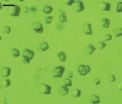(Press-News.org) NINETEEN PERCENT of the world's reptiles are estimated to be threatened with extinction, states a paper published today by the Zoological Society of London (ZSL) in conjunction with experts from the IUCN Species Survival Commission (SSC).
The study, printed in the journal of Biological Conservation, is the first of its kind summarising the global conservation status of reptiles. More than 200 world renowned experts assessed the extinction risk of 1,500 randomly selected reptiles from across the globe.
Out of the estimated 19% of reptiles threatened with extinction, 12% classified as Critically Endangered, 41% Endangered and 47% Vulnerable.
Three Critically Endangered species were also highlighted as possibly extinct. One of these, a jungle runner lizard Ameiva vittata, has only ever been recorded in one part of Bolivia. Levels of threat remain particularly high in tropical regions, mainly as a result of habitat conversion for agriculture and logging. With the lizard's habitat virtually destroyed, two recent searches for the species have been unsuccessful.
Dr. Monika Böhm, lead author on the paper: "Reptiles are often associated with extreme habitats and tough environmental conditions, so it is easy to assume that they will be fine in our changing world.
"However, many species are very highly specialised in terms of habitat use and the climatic conditions they require for day to day functioning. This makes them particularly sensitive to environmental changes," Dr. Böhm added.
Extinction risk is not evenly spread throughout this highly diverse group: freshwater turtles are at particularly high risk, mirroring greater levels of threat in freshwater biodiversity around the world. Overall, this study estimated 30% of freshwater reptiles to be close to extinction, which rises to 50% when considering freshwater turtles alone, as they are also affected by national and international trade.
Although threat remains lower in terrestrial reptiles, the often restricted ranges, specific biological and environmental requirements, and low mobility make them particularly susceptible to human pressures. In Haiti, six of the nine species of Anolis lizard included in this study have an elevated risk of extinction, due to extensive deforestation affecting the country.
Collectively referred to as 'reptiles', snakes, lizards, amphisbaenians (also known as worm lizards), crocodiles, and tuataras have had a long and complex evolutionary history, having first appeared on the planet around 300 million years ago. They play a number of vital roles in the proper functioning of the world's ecosystems, as predator as well as prey.
Head of ZSL's Indicators and Assessment Unit, Dr Ben Collen says: "Gaps in knowledge and shortcomings in effective conservation actions need to be addressed to ensure that reptiles continue to thrive around the world. These findings provide a shortcut to allow important conservation decisions to be made as soon as possible and firmly place reptiles on the conservation map,"
"This is a very important step towards assessing the conservation status of reptiles globally," says Philip Bowles, Coordinator of the Snake and Lizard Red List Authority of the IUCN Species Survival Commission. "The findings sound alarm bells about the state of these species and the growing threats that they face globally. Tackling the identified threats, which include habitat loss and harvesting, are key conservation priorities in order to reverse the declines in these reptiles."
The current study provides an indicator to assess conservation success, tracking trends in extinction risk over time and humanity's performance with regard to global biodiversity targets.
ZSL and IUCN will continue to work with collaborating organisations to ensure reptiles are considered in conservation planning alongside more charismatic mammal species.
###
Editors' notes
Interviews: Available on request with Dr. Ben Collen or Dr. Monika Böhm
Copies of the full paper are available on request
Images and B-Roll
High resolution images available here:- https://zslondon.sharefile.com/d/s1cd538d64f54ee6a
Media Information
For more information please contact Amy Harris on 0207 449 6643 or email amy.harris@zsl.org
ZSL
Founded in 1826, the Zoological Society of London (ZSL) is an international scientific, conservation and educational charity whose mission is to promote and achieve the worldwide conservation of animals and their habitats. Our mission is realised through our groundbreaking science, our active conservation projects in more than 50 countries and our two Zoos, ZSL London Zoo and ZSL Whipsnade Zoo. For more information visit www.zsl.org
About IUCN
IUCN, International Union for Conservation of Nature, helps the world find pragmatic solutions to our most pressing environment and development challenges. IUCN supports scientific research, manages field projects all over the world, and brings governments, NGOs, the UN and companies together to develop policy, laws and best practice. IUCN is the world's oldest and largest global environmental organization, with more than 1,000 government and NGO members and almost 11,000 volunteer experts in some 160 countries. IUCN's work is supported by over 1,000 staff in 60 offices and hundreds of partners in public, NGO and private sectors around the world. www.iucn.org; IUCN on Facebook; IUCN on Twitter
Information from this study will form part of the global assessment of reptiles which is being undertaken by IUCN. More than 3,700 of the world's nearly 10,000 species of reptiles have already been assessed in this ongoing process.
About the Species Survival Commission
The Species Survival Commission (SSC) is the largest of IUCN's six volunteer commissions with a global membership of around 8,000 experts. SSC advises IUCN and its members on the wide range of technical and scientific aspects of species conservation, and is dedicated to securing a future for biodiversity. SSC has significant input into the international agreements dealing with biodiversity conservation.
The IUCN Red List of Threatened Species™
The IUCN Red List of Threatened Species™ (or The IUCN Red List) is the world's most comprehensive information source on the global conservation status of plant and animal species. It is based on an objective system for assessing the risk of extinction of a species should no conservation action be taken.
Species are assigned to one of eight categories of threat based on whether they meet criteria linked to population trend, population size and structure and geographic range. Species listed as Critically Endangered, Endangered or Vulnerable are collectively described as 'Threatened'.
The IUCN Red List is not just a register of names and associated threat categories. It is a rich compendium of information on the threats to the species, their ecological requirements, where they live, and information on conservation actions that can be used to reduce or prevent extinctions.
The IUCN Red List is a joint effort between IUCN and its Species Survival Commission, working with its Red List partners BirdLife International; Botanic Gardens Conservation International; Conservation International; Microsoft, NatureServe; Royal Botanic Gardens, Kew; Sapienza University of Rome; Texas A&M University; Wildscreen; and Zoological Society of London (ZSL). www.iucnredlist.org www.facebook.com/iucn.red.list @amazingspecies
Reptiles
Crocodiles
Crocodiles are genetically closer to birds than to other reptiles. There are around 25 species found in Americas, Asia, Africa and Australia. The largest extant reptile of all is the saltwater crocodile.
Tuatara
The tuatara is a reptile endemic to New Zealand which, though it resembles most lizards, is actually part of a distinct lineage, order Rhynchocephalia. The tuatara is the only surviving members of its order, which flourished around 200 million years ago. There were previously thought to be two living species of tuatara, but recent evidence suggests only a single species, Sphenodon punctatus, exists. The recent discovery of a tuatara hatchling on the mainland indicates attempts to re-establish a breeding population on the New Zealand mainland have had some success. The total population of tuatara of all species and subspecies is estimated to be greater than 60,000, but less than 100,000.
Amphisbaenia
The Amphisbaenia (called amphisbaenians or worm lizards) are a usually legless suborder of squamates closely related to lizards and snakes, comprising more than 150 species. They are very poorly understood, due to their burrowing lifestyle and general rarity. Most species are found in Africa and South America, with a few in other parts of the world.
Lizards & Snakes
Lizards are a widespread group of squamate reptiles, with more than 5600 species, ranging across all continents except Antarctica, as well as most oceanic island chains. Lizards typically have feet and external ears, while snakes lack both of these characteristics. There are over 3,000 species of snakes ranging as far northward as the Arctic Circle in Scandinavia and southward through Australia. Snakes can be found on every continent (with the exception of Antarctica), in the sea, and as high as 16,000 feet (4,900 m) in the Himalayan Mountains of Asia.
Amy Harris
Media Manager
Zoological Society of London
ZSL London Zoo
Regent's Park
London
NW1 4RY
T: 0207 449 6643
www.zsl.org
Slithering towards extinction
Almost 1 in 5 reptiles are struggling to survive
2013-02-15
ELSE PRESS RELEASES FROM THIS DATE:
Losing hope of a good night's sleep is risk factor for suicide
2013-02-15
AUGUSTA, Ga. – When people lose hope that they will ever get another good night's sleep, they become at high risk for suicide, researchers report.
Insomnia and nightmares, which are often confused and may go hand-in-hand, are known risk factors for suicide but just how they contribute was unknown, said Dr. W. Vaughn McCall, Chair of the Medical College of Georgia Department of Psychiatry and Health Behavior at Georgia Regents University.
The new study reaffirms that link and adds the element of hopelessness about sleep that is independent of other types of hopelessness, ...
Climate scientist Schellnhuber to brief UN Security Council
2013-02-15
It will take place on February 15th at the UN headquarters in New York City. Secretary-General Ban Ki-moon plans to attend.
"With unabated greenhouse-gas emissions, humankind would venture into an uncertain future that is much hotter than ever before in its history – so from a scientist's perspective, climate change is a global risk multiplier," says Schellnhuber, director of PIK and chair of the Scientific Advisory Council on Global Change (WBGU) for the German government. Many millions of people could be affected by severe climate change impacts. They range from sea-level ...
Math helps detect gang-related crime and better allocate police resources
2013-02-15
Philadelphia, PA—Social groups in a population can lend important cues to law enforcement officials, consumer-based services and risk assessors. Social and geographical patterns that provide information about such communities or gangs have been a popular subject for mathematical modeling.
In a paper published last month in the SIAM Journal on Applied Mathematics, authors use police department records about individuals' social and geographical information to determine gang memberships.
Data on social interactions is particularly hard to come by, but in combination ...
Yale study links common chemicals to osteoarthritis
2013-02-15
New Haven, Conn. – A new study has linked exposure to two common perfluorinated chemicals (PFCs) with osteoarthritis. PFCs are used in more than 200 industrial processes and consumer products including certain stain- and water-resistant fabrics, grease-proof paper food containers, personal care products, and other items. Because of their persistence, PFCs have become ubiquitous contaminants of humans and wildlife. The study, published in Environmental Health Perspectives, is the first to look at the associations between perfluorooctanoic acid (PFOA) and perfluorooctanesulfonic ...
Why cells stick: Phenomenon extends longevity of bonds between cells
2013-02-15
Research carried out by scientists at the Georgia Institute of Technology and The University of Manchester has revealed new insights into how cells stick to each other and to other bodily structures, an essential function in the formation of tissue structures and organs. It's thought that abnormalities in their ability to do so play an important role in a broad range of disorders, including cardiovascular disease and cancer.
The study's findings are outlined in the journal Molecular Cell and describe a surprising new aspect of cell adhesion involving the family of cell ...
Researchers invent 'acoustic-assisted' magnetic information storage
2013-02-15
CORVALLIS, Ore. – Electrical engineers at Oregon State University have discovered a way to use high- frequency sound waves to enhance the magnetic storage of data, offering a new approach to improve the data storage capabilities of a multitude of electronic devices around the world.
The technology, called acoustic-assisted magnetic recording, has been presented at a professional conference, and a patent application was filed this week.
Magnetic storage of data is one of the most inexpensive and widespread technologies known, found in everything from computer hard drives ...
Leading RSV researcher publishes work at Le Bonheur Children's
2013-02-15
Memphis, Tenn. – Studies at Le Bonheur Children's Hospital in Memphis, Tenn., are advancing our understanding of how viruses, including RSV, replicate in humans, mutate to avoid the immune response and can be effectively treated.
John DeVincenzo, MD, medical director of Molecular Diagnostics and Virology Laboratories at Le Bonheur, and professor of Pediatrics and Microbiology, Immunology, and Molecular Biology at The University of Tennessee Health Science Center, has recently published three papers on this topic. DeVincenzo's lab is one of only two of its kind in the ...
Revealing the secrets of motility in archaea
2013-02-15
The protein structure of the motor that propels archaea has been characterized for the first time by a team of scientists from the U.S. Department of Energy's Lawrence Berkeley National Laboratory (Berkeley Lab) and Germany's Max Planck Institute (MPI) for Terrestrial Microbiology.
The motility structure of this third domain of life has long been called a flagellum, a whip-like filament that, like the well-studied bacterial flagellum, rotates like a propeller. But although the archaeal structure has a similar function, it is so profoundly different in structure, genetics, ...
APS applauds President Obama's support of R&D in SOTU
2013-02-15
WASHINGTON, D.C. – The American Physical Society (APS), the nation's largest organization of physicists, commends President Obama's exhortation in his State of the Union Speech that, "Now is the time to reach a level of research and development not seen since the height of the Space Race."
During the Space Race, the nation made huge investments in scientific research, which led to new discoveries, accelerated technological advancements and generated new innovations and businesses.
The President also noted that sequestration -- automatic spending cuts scheduled to occur ...
A dual look at photosystem II using the world's most powerful X-ray laser
2013-02-15
From providing living cells with energy, to nitrogen fixation, to the splitting of water molecules, the catalytic activities of metalloenzymes – proteins that contain a metal ion – are vital to life on Earth. A better understanding of the chemistry behind these catalytic activities could pave the way for exciting new technologies, most prominently artificial photosynthesis systems that would provide clean, green and renewable energy. Now, researchers with the U.S. Department of Energy (DOE)'s Lawrence Berkeley National Laboratory (Berkeley Lab) and the SLAC National Accelerator ...
LAST 30 PRESS RELEASES:
School meals could unlock major gains for human and planetary health
Menopause hormone therapy does not appear to impact dementia risk
Signature patterns of brain activity may help predict recovery from traumatic brain injury
Dresden study uncovers new key mechanism in cancer cells
New species are now being discovered faster than ever before, study suggests
Cannabis-based products show limited short-term benefit for chronic pain, with increased risk of adverse effects
Cannabis products with more THC slightly reduce pain but cause more side effects
Clearing the brain of aging cells could aid epilepsy and reduce seizures
Brain injuries linked with potential risk of suicide, new study finds
New technique lights up where drugs go in the body, cell by cell
New study finds movement of fishing fleets can reveal shifts in marine ecosystems
Embargoed: New evidence points to potential treatment for vascular dementia
Study uncovers disrupted brain balance in alcohol dependence
Working in groups can help Republicans and Democrats agree on controversial content moderation online
Structural findings reveal how distinct GPCR ligands create different levels of activation
Anything-goes “anyons” may be at the root of surprising quantum experiments
UC review: Maximizing workplace opportunity for veterans
From generation to complex control: Metasurfaces make perfect vortex beams "within reach"
Thin-film lithium niobate-based detector: recent advances and perspectives
Exploring why some people may tend to persistently make bad choices
How cells balance their protein levels
Nirsevimab vs RSVpreF vaccine for RSV–related hospitalization in newborns
Effectiveness and impact of maternal RSV immunization and nirsevimab on medically attended RSV in US children
AI gives scientists a boost, but at the cost of too many mediocre papers
Next-generation vision model maps tree growth at sub-meter precision
Genes aren’t destiny for inherited blindness, study shows
MIT study: High-fat diets make liver cells more likely to become cancerous
Exposure to multiple fine particulate matter components and incident depression in the US Medicare population
Risk of burdensome health care spending over time in the US
Nirsevimab against hospitalizations and emergency department visits for lower respiratory tract infection in infants
[Press-News.org] Slithering towards extinctionAlmost 1 in 5 reptiles are struggling to survive



